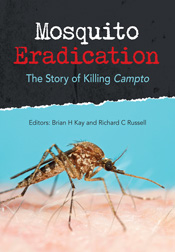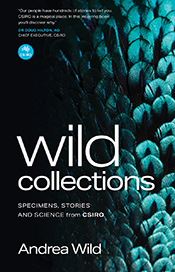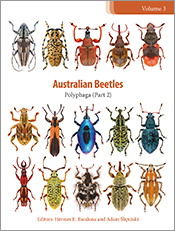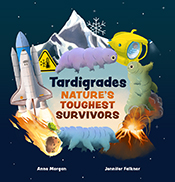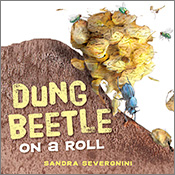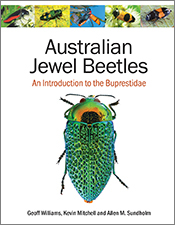Mosquito Eradication
The Story of Killing Campto
Edited by: Brian H Kay, Richard C RussellThe story of how the Southern Saltmarsh Mosquito was eradicated from New Zealand through a world first program.
In 1998, the Southern Saltmarsh Mosquito Aedes camptorhynchus (‘Campto’) was accidentally transported from Australia to Hawke’s Bay in New Zealand, from where it dispersed to another 10 localities mainly on the North Island. After an investment of NZ$70 million over 10 years, this saltmarsh carrier of Ross River virus was eradicated in a world-first program which surprised many. + Full description
How did it get there? How did it spread? How did the team cope when it arrived at Kaipara Harbour, said to be the largest harbour in New Zealand? This book draws together the entire unprecedented campaign, uncovering the twists and turns and nasty surprises the team had to deal with along the way. Written in an approachable way, it also contains new unpublished technical information which will be sought after by professionals.
- Short descriptionNews
No longer available in a print edition.
Reviews
"Mosquito Eradication: The Story of Killing Campto is an excellent read... This book is of broad interest to anyone involved in mosquito control and eradication, across all levels (technical, scientific, governmental). As written, it is also an easily accessibly resource to any interested general audience. This book preserves the first story of saltmarsh mosquito eradication so that the wealth of information associated with this eradication will not be forgotten."
Scott Carver, Australasian Journal of Environmental Management, Vol 23(1), 2016, pp 119-121
Details
ePDF | November 2013ISBN: 9781486300587
Publisher: CSIRO Publishing
Available from eRetailers
ePUB | November 2013
ISBN: 9781486300594
Publisher: CSIRO Publishing
Available from eRetailers
Features
- Draws together the entire unprecedented campaign: science, politics, environment
- The only known publication relating to the mosquito eradication
- The volume editors are both top internationally recognised scientific authors with approximately 500 publications between them
Contents
PrefaceDedication
Abbreviations
List of Contributors
Chapter 1: How it was before: historical perspectives on receptivity and risk
Brian Kay, JR Gardner, Gene Browne
Chapter 2: Strategy development and refinement at Hawke’s Bay
Steve Garner, Noel Watson, Henry Dowler, Darryl McGinn, David Sullivan, Brian Kay
Chapter 3: From the top: who’s paying for this? (National programme management)
Sally Gilbert, Andrew Forsyth, Ian Gear, David Sullivan, David Yard
Chapter 4: Listening to the experts – the advice that drove the national programme
Sally Gilbert, Andrew Forsyth, Ian Gear, David Sullivan, David Yard
Chapter 5: Who knows how to do broadscale aerial control of mosquitoes?
Darryl McGinn, David Sullivan
Chapter 6: Coming to grips with ProLink XR-G at Hawke’s Bay
Brian Kay, Michael Brown, Gene Browne, Barbara Thomson
Chapter 7: Pathways of entry and mosquito dispersal
Andrew McFadden, Graham Mackereth, Ruud Kleinpaste, Robert Sanson, Nigel Beebe,
Bryn Gradwell, Mark Bullians, Ruth Frampton
Chapter 8: Camp Kaipara – a mosquito or programme death camp?
Bryn Gradwell, Monica Singe, Shaun Maclaren, Steve Crarer, Jessica Taylor, Mark Disbury
Chapter 9: Developing detection and surveillance
Graham Mackereth, Monica Singe, Mark Disbury, Sally Gilbert, Noel Watson, Craig Williams,
Rachel Cane, Scott Ritchie
Chapter 10: The national exotic saltmarsh mosquito surveillance programme
Monica Singe, Mark Disbury, Darryl McGinn
Chapter 11: Maintaining environmental integrity in invasion areas
Helen Gear, Travis R. Glare and Maureen O’Callaghan
Chapter 12: Communications and cultural issues
JR Gardner, Val Aldridge, Bryn Gradwell
Chapter 13: Reflections on a successful eradication programme
Richard Russell, Henry Dowler, JR Gardner, Sally Gilbert, Matthew Stone
Index
Authors
Brian Kay AM is a Group Leader at Queensland Institute of Medical Research's Mosquito Control Laboratory, which is designated by the World Health Organization as an official global Collaborating Centre for Environmental Management for Vector Control. He is renowned for his arbovirus and mosquito research, and has published 285 papers and is a highly sought after expert speaker at international events. In 1999 he was awarded the DI Ivanovsky Centenary Medallion for his achievements, in 2005 he was appointed a Member of the Order of Australia for his scientific contributions, and in 2006 he was elected as a Fellow of the prestigious Australian Academy of Science.Richard Russell is Professor of Medical Entomology at The University of Sydney, and founding Director of the Department of Medical Entomology at Westmead Hospital. He has worked as a Medical Entomologist, in public health and tropical medicine, for more than 40 years, and has a broad experience with insects and other arthropods of medical importance. His specialties are mosquito biology, mosquito-borne disease and mosquito control. He has published more than 200 scientific papers on mosquitoes and related topics, and four monographs, including as co-author of the 12-volume The Culicidae (Mosquitoes) of the Australasian Region.
Contributors: Val Aldridge, Nigel Beebe, Michael Brown, Gene Browne, Mark Bullians, Rachel P Cane, Steve Crarer, Mark Disbury, Henry Dowler, Andrew Forsyth, Ruth Frampton, John Gardner, Steve Garner, Helen Gear, Ian Gear, Sally Gilbert, Travis R Glare, Bryn Gradwell, Brian Kay, Ruud Kleinpaste, Graham Mackereth, Shaun Maclaren, Andrew McFadden, Darryl McGinn, Maureen O'Callaghan, Scott Ritchie, Richard Russell, Robert Sanson, Monica Singe, Matthew Stone, David Sullivan, Jessica Taylor, Barbara Thomson, Noel Watson, Craig Williams, David Yard.

